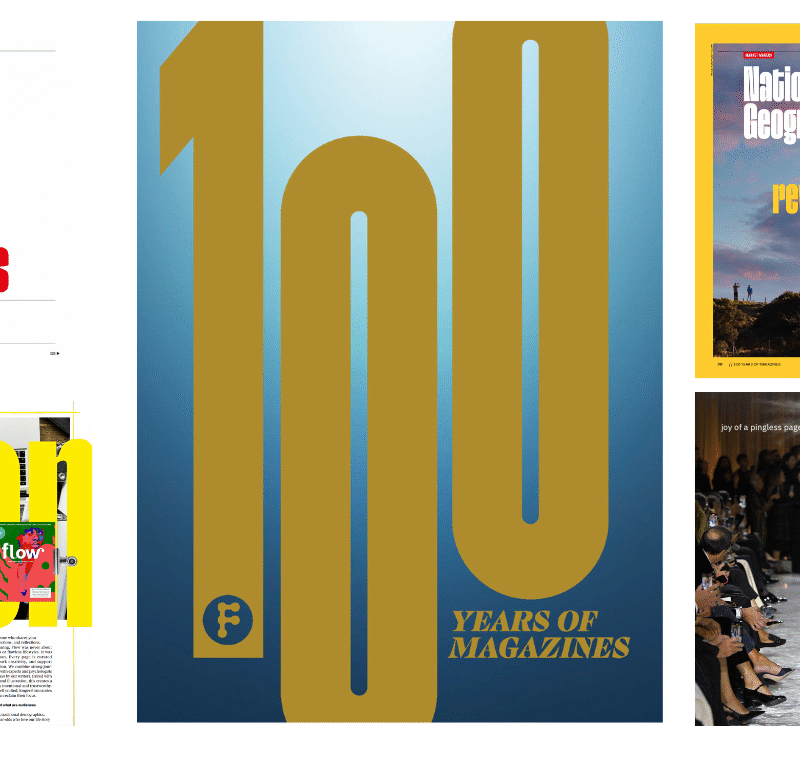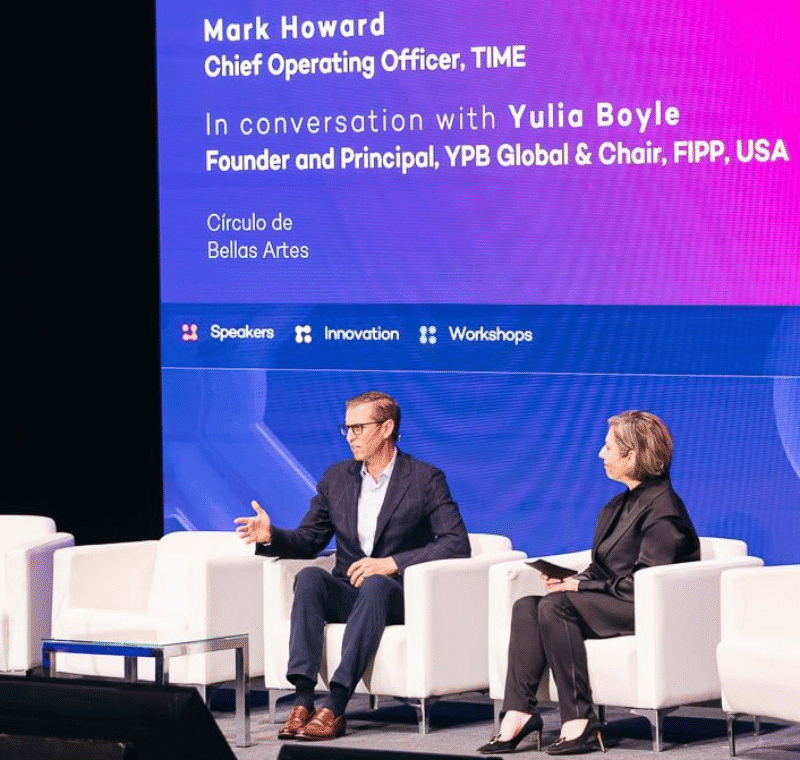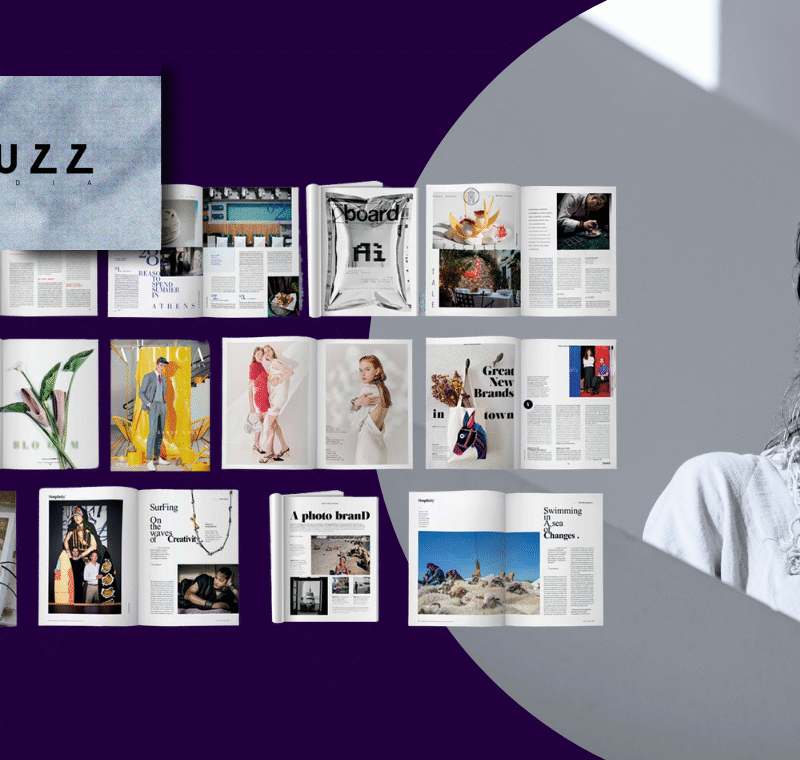FIPP100: Exploring the Swedish market with Sveriges Tidskrifter
Representing 4,000 magazines with a turnover of SEK 6.3 billion, Sveriges Tidskrifter offers vital support to Swedish publishers during a time when the local media industry is going through some seismic changes.
Formed in 1997, the National Association has around 350 members covering everything from commercial lifestyle brands to trade union newspapers and pure digital players. A tireless champion for the Swedish media industry, Sveriges Tidskrifter pursues common issues, engages politicians on media matters, protects press ethics and highlights good industry practices through its courses, events and awards.

In the next of our series of centenary celebration interviews with National Associations (NAS) leading up the FIPP World Media Congress – taking place in Madrid from 21-23 October 2025 – we catch up with Kerstin Neld, CEO at Sveriges Tidskrifter, to talk about how they keep publishers in Sweden informed and how FIPP has helped the Association evolve over the years.
Could you tell us a bit more about your members and the broad sector they cover?
Members apply to our organisation on a title basis. You have to have a publishing certificate – something that you here get in Sweden – and an editor in charge. So that means a big group like the Bonnier Group have 32 members and so on. And we cover everything from the commercial sector and B2B to consumer magazines, print and digital.

Sveriges Tidskrifter strives to protect press ethics. How do you go about doing that?
We go about it in a very specific way. We have a self-regulatory system in Sweden called the Media Ombudsman. And that is something that we run together with the newspaper industry, the public service companies and commercial TV. The Media Ombudsman is a person who’s quite well known, and if an individual wants to complain about how they are treated by the media, they can make a complaint – and the Media Ombudsman will handle that. It’s a system that we finance together with the other media categories. We want politicians to make as few laws as possible when it comes to our sector and that’s why we handle it through the self-regulatory system instead. We have been seeing politicians about this, and it’s been up and running for several years. It was only newspapers and magazines doing press ethics about seven or eight years back, but now it’s about media ethics and it includes commercial TV and public service. It’s well-working system and the politicians like it. It’s not like a court where you win something, but you can get an apology from a media outlet if something was not done in the right way.
What are the main obstacles for the Swedish media industry at the moment?
Probably the same things as the UK, the rest of Europe and the world. We are striving to find a way to capitalise on digital readers. There’s a turnover of SEK 6.3 billion from the magazine sector as we define it, and from that about 50% comes from the readers. And of those 50%, only 13% are from digital reading. I think that’s something that we have in common with a lot of countries. People read digital, but they don’t like to pay for it. If I only have one problem to address that’s it. But then, like other countries, we are totally dependent on the tech platforms and they take all the ad revenues. If reader revenues are 50% in Sweden, about 40% comes from advertising. Advertising revenues are better digitalised than reader revenues – more than 50% actually comes from digital advertising. But we’re losing a lot of ad revenues to Google, Facebook and social. And it totally depends on the algorithm. With AI search implemented in the Swedish market, we can now see that traffic from search is dropping quite rapidly. And AI is of course a mystery. It could be a big opportunity, but also a threat.

What are some of the courses and events you do to keep your members well informed?
About once a month we have what we call a Digital Breakfast Meeting on different topics. We have a lot of members joining for those meetings. It’s about sharing competence on different subjects, so we almost always have a case study. We have different topics that concerns revenues, or it could be more about editorial issues. Sometimes we have an external expert, but we always have case studies looking at how certain issues were dealt with. Those are very popular. We also organise a Magazine of the Year award where we give out about 10 or 15 prizes. Around 500 people gather to be part of that. Of course, we also have regular courses that members can pay for. By coming to us, they meet colleagues with similar problems they face.
You also have industry guides and tools on your website to aid members.
Yes, external companies draw them up. For instance, every year we calculate revenues in our industry and what drives them and that’s done by an external company called IRM. They will gather information from our members and that’s the report we publish every year in April. We do a separate report on digital revenues from the readers, since that’s such a concern. We have a different company that go through all the magazine sites and look at things like – what do they charge, do they have a newsletter? We then bring out a report with a lot of with KPIs and calculate how digital reader revenues develop. These reports are part of the memberships and we only keep them for our members.

How has FIPP and the FIPP World Media Congress helped Sveriges Tiskrifter in the past?
When I went to Portugal last year to the FIPP Congress, I listened to a presentation by PPA CEO Sajeed Merali during a National Association’s meeting where some of the associations presented different projects that they were proud of. And she presented something on a Next Gen Board featuring future leaders in the industry. I thought it was such an excellent idea, so I went back and presented the idea to my board in September after the Congress and we decided let’s go for it. And Sajeeda was very helpful. We invited her digitally to participate in a conference where we discussed how to go about this, and now we have recruited 10 excellent young people onto the Next Gen Board. They are going to have three different projects to work on over the course of a year and a half that we decided this first board will last. FIPP has also been very helpful when I need keynote speakers for our events. I just need to pick up the phone and call. And I think it’s great meeting colleagues at the FIPP Congress to find out what is happening in other parts of the world.
How will the Swedish media landscape evolve over the next few years?
I think Sweden is maybe a bit ahead when it comes to how digitalised people here are. We have a quite high level of digitalisation and I think we’re on a path that’s not going to stop. It’s difficult to get the younger generation to read at all. There is a difference in journalism and general news that you read on social media and I think that’s something that everyone should know. There is a difference with curated content and with real journalism that we really do need during this time. But there’s going to be, of course, more and more digital and less and less print – to a point where you cannot afford to publish print anymore. It’s a little bit like comparing how people all of a sudden love vinyl and I think maybe the same thing is going to happen. There will be revivals of paper magazines. Nice, great magazines. But it will be very difficult to base your business on it. Print will still be there, but more and more publishers will have a problem affording print. And the sad thing is that it’s not just a decision: ‘OK, leave print, we go digital’ because for the big broad magazines – the weeklies, the fashion magazines, the gardening magazine, the food magazine – it’s really difficult to find a business in the digital world that’s not from advertising. And advertising is not going to cut it. You have to find reader revenues. I don’t know how that’s going happen, but I hope it will.










